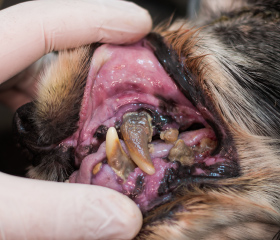

FACT: Most dogs and cats over the age of 4 years have a level of dental disease
FICTION: “Bones are ideal to keep teeth clean”…..they are not.
- Bones break teeth
- They get stuck (between teeth, and in the gut)
- Bones can cause painful constipation
FACT: Brushing teeth is the best method to prevent and control dental disease. If your pet already suffers from severe periodontal disease it is best to first have the teeth professionally scaled and polished, or else brushing will be as effective as ‘sweeping a beach’, as calculus is similar to concrete covering the teeth.
FICTION: “My pet can’t have dental problems as he/she is still eating without any trouble” Many animals continue to eat well despite severely painful dental abnormalities. Appetite is not a sensitive indicator of dental disease. Rather have a vet assess the teeth at the annual check-up.
FACT: Untreated periodontal disease can lead to bacteria entering the bloodstream and causing disease in the kidneys, heart and liver. The earlier dental disease is addressed, the better.
FICTION: “My pet is too old for dental procedures under anaesthetic” All anaesthetic carries risk, even in a young healthy patient; however, the benefits seen with dental treatment are enormous. A veterinarian is trained to evaluate each case individually and will discuss what extra precautions can be taken to mitigate risk (e.g. pre-anaesthetic blood tests, intra-operative fluids).
FACT: Small breed dogs tend to have more severe periodontal disease than large breed dogs (teeth overcrowding, poor diet). Large breed dogs often present with tooth fractures.
FICTION: “I had a dental done on my dog last year, so he’s fine now”. A dental alone is insufficient; homecare (tooth brushing) is essential to maintain oral health. Some pets are more prone to dental disease requiring more frequent treatments (6monthly). If your pet does not tolerate tooth brushing there are alternatives (wiping with gauze, dental diets, dental chews, water additives) although these are not as efficient as brushing.
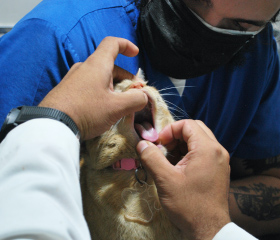
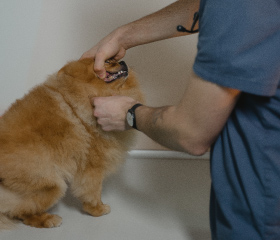
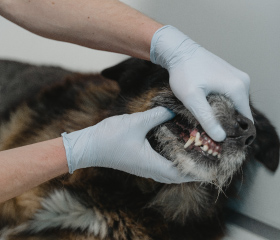
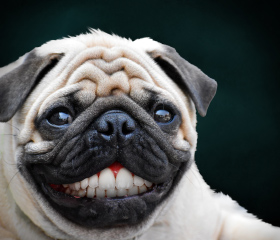
Key points:
- Dental disease is easily missed
- The later dental disease is addressed, the greater the chance for irreversible damage
- Home treatment (tooth brushing) is extremely important
Tips on toys:
- X Bones are a no-no in our opinion (break teeth, get stuck, cause constipation) (animals in the wild generally do not have the lifespan of our pets).
- X Tennis balls collect sand in the fibres…and this can act as sandpaper to the enamel.
- X Hooves can break teeth and cut gums.
- X Balls on a rope are very tempting for owner and pet to pull extensively…not ideal
- Rubber balls and rubber bones are generally suitable. ‘Kong’ consist of a wide range, and treats like peanut butter can be smeared in some toys keeping the pet busy for a good while.
- Choose an appropriately sized chew toy for the pet (too small and they might choke on it)


